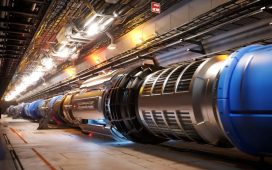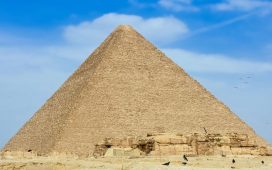These days, the term Artificial Intelligence (AI) seems to be everywhere. The public has come to view it with mixed perceptions. On one side, it is a problem-solver: AI has helped in monitoring heart problems and eye conditions and offered treatment options; AI predicts protein structure, and aids in the development of new drug molecules. Likewise, it predicts cyclones, monsoon strengths, etc. On the dark side are fears that jobs may be lost to thinking machines that work 24/7 and do not need a Diwali vacation, and may intrude on your privacy and misuse your data. But nobody doubts that AI will help us in addressing large-scale problems that require the analysis of huge data.
As India’s development gathers momentum, we are faced with the eventuality of resource limitations. We may need much more than we have. This is especially true of water — every year we see floods in parts of the country, and drought in others. Engineers have long dreamt of building links between our rivers to mitigate these problems. But uncertainties over the effects of such large-scale changes have stalled many initiatives.
Benefits of linking rivers
For the nation’s planners, minimising the water deficit has become a critical goal in this age of climate change and unpredictable weather. Can AI tools be used to make predictions on how to bring about change? Computational modelers at the IIT-ISM, Dhanbad and the NITs in Tripura and Goa have done just this while examining the proposed Pennar-Palar-Cauvery link canal.
This canal is part of a scheme to connect the flood-prone Mahanadi and Godavari rivers with the ‘deficit’ rivers further south. The link canal would aid half-a-million hectares in a chain of districts, from Nellore in Andhra Pradesh to Cuddalore in Tamil Nadu. Such proposals have a complex set of objectives, which can be modeled in the search for maximum benefits to the most people.
Fulfilling many objectives
In a multi-objective model, the goal is to achieve more than one objective optimally. For example, a farmer may wish to get the maximum yield of his crop with the minimum use of water. He would tweak his system to a point where he can no longer improve one objective without worsening the other.
The IIT-NIT team has presented a model that aims to improve the returns from farms, without depleting groundwater or wasting the water in rivers and reservoirs (Agricultural Water Management, v-279, 2023). They used data that has been collected over the years by the National Water Development Agency on (a) water levels before and after monsoons in the 1.2 lakh wells and tube wells in these districts; (b) crop-sowing patterns; (c) prevailing minimum support price and the cost and benefits to farmers. This AI-based modeling effort suggests that favourable outcomes will come with a few adjustments to the choice of crops that are grown in the two seasons of July and November. Collecting more detailed data will help such AI-based models in making more focused predictions.
(The article was written in collaboration with Sushil Chandani, who works in molecular modelling)
month
Please support quality journalism.
Please support quality journalism.











